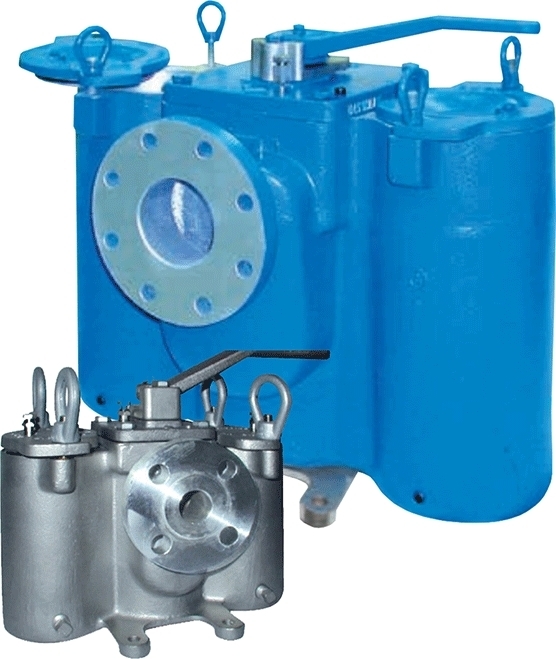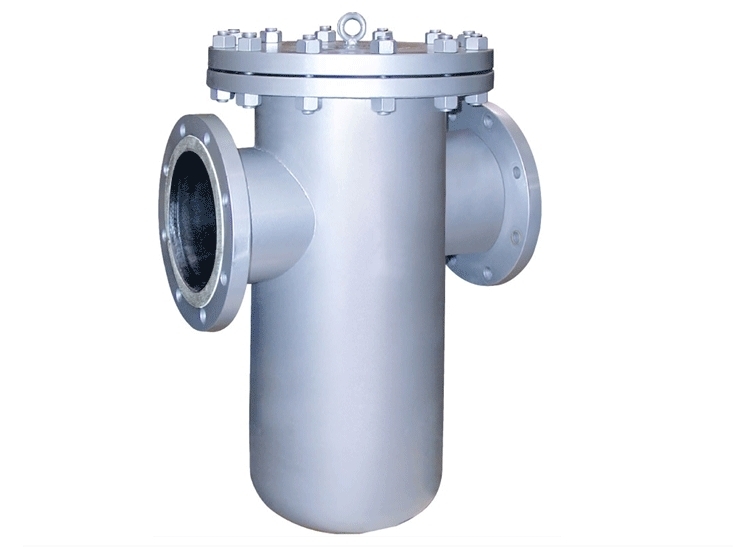Resources
Does Strainer Technology Make Sense for Your Process?
The key to developing the ideal filtration mix which achieves the desired results is to gather as much information as possible so that the right decisions about filtration can be made. Kari Kohonen from Valin Corporation examines whether introducing strainer technology can be advantageous.
Strainer technology is continuing to grow in popularity in the world of filtration. Given the correct circumstances, introducing strainers to a process can have a very positive effect on the quality of the final product and ultimately, on equipment and maintenance costs.

Eaton Model 53BTX Duplex Strainer
Understanding Your Process
Before decisions are made about whether it makes sense to incorporate a strainer in your process stream, it is important to have a clear idea of the nature of the stream’s makeup. Then, based on the filtration goals, it is easier to determine if and how to implement a strainer.
There are several vital questions to ask about a process to truly understand it in the most complete way possible.
Desired Filtration Level
A desired filtration level is another way of asking how clean a process must ultimately be. It can be difficult to ascertain the amount of filtration that should be specified for a process if you don’t know the expectations of the finished product. It may be that the end goal is to produce a liquid that only needs to be at a cleanliness level that doesn’t require more than a simple filtration process with very little nuance. Alternatively, cleanliness may be of the utmost importance. Every situation is different but knowing where you’re trying to go is critical to know the best way to get there. There are many variables that determine how clean a process fluid should be.
Contaminants Present
Once you determine how clean the final product needs to be, it’s important to understand the contaminants. This is the biggest pitfall routinely seen in the industry. There are too many processes where there is not a complete understanding of the contaminants present in the flow which leads to an imperfect approach to eliminating them. What exactly is the nature of the contaminants the filtration is working against? The nature of the contaminant and the kind of chemical properties it has can influence a filtration strategy. This analysis should then go hand in hand with additional details about the contaminant.
Particle Distribution & Weight of Contaminants
For example, the particle distribution of the contaminants is important. Is the distribution of the contaminants even throughout the product? If not, adjustments need to be made. What is the range of particle size of the contaminants? Are some of the particles significantly larger than others? Finally, what is the volume of contaminants in the process? It is impossible to be confident in a specified filtration system if the nature of the contaminant being filtered out is not completely understood or if it’s misunderstood. Analysing the contaminants in a fluid is required to determine the best strategy for purification.
Desired Run Time Before Required Maintenance
The last factor to keep in mind about a process is the maintenance of the equipment. Operational and maintenance expectations are often overlooked and not considered when sizing filtration vessels. How often will personnel be expected/permitted to perform regular, preventative, and reactionary maintenance on the equipment involved in a process? What is in the budget for maintenance and equipment replacement? If equipment breaks down or is left unmaintained for an extended period of time, it can have a catastrophic effect on the operation. All equipment is going to have regular maintenance requirements, but depending on how the filtration is implemented, it may be more often than not.

Eaton Manual Pipeline Strainer Model 90 1-48 in.
Incorporating a Strainer
Many filtration setups could benefit from the introduction of a strainer into their process. It is not always going to be a requirement and, depending on what is ultimately discovered during the analysis phase, a strainer may be an unnecessary cost. However, it is far more common that a process is not utilising strainer technology when it might benefit from it.
To break it down to its most basic concept, a strainer will better facilitate workload distribution. By using a strainer in a process system, as opposed to just relying on cartridges and filter media, it is possible to spread the load. Depending on what’s discovered about the contaminants in terms of particle size, distribution and weight, strainers can be very effective pieces of equipment. For example, if the analysis of the liquid confirms the distribution of the contaminant is widely spread, but a high percentage of the particles are 38 micron and above, it may make sense to insert a fine mesh strainer at the beginning of the process to act as a first wall of defence. However, this type of strategic thinking can only take place once the nature of the liquid is fully understood.
Staged Filtration
Strainers can be effective if the strategy is to go with a staged filtration approach. Commonly used to put less stress on the equipment throughout the process, this approach uses multiple vessels to filter out the contaminant along with incorporating strainers upstream. This approach can greatly increase filtration effectiveness providing for maximum runtime before maintenance is ultimately required.
Increasing surface area and dirt holding capacity should theoretically allow for greater run time before change outs of filter media. It’s important to note, however, that other variables can impact a filter’s efficiency for holding dirt. For example, particulate can penetrate the filter media due to filter blinding, as the pores of the media become blocked. This results in a spiking differential pressure, leading to flow blockage as a potential consequence.
If a sample analysis reveals that a high percentage of particulate is larger than 400 mesh (38 micron), incorporating a strainer to capture this contaminant can result in increased run times and decreased overall filtration change outs of downstream vessels. Additional benefits include reductions in filter consumption, waste, VOC environmental impacts, and reduced health and safety risks to employees and contractors.
Environmental Benefits
In addition, and not to be overlooked, are the environmental benefits of using a strainer in a process. Strainer baskets are very robust and do not get thrown away like filters, leading to far less waste than an over reliance on cartridge media. Additionally, strainers are cleanable and reusable by nature of their design.
Is strainer technology an optimal approach for any filtration challenge? Generally, yes, but in order to get the most out of a strategy, it’s important to fully understand everything possible about a process. Only then can an educated decision be made about if and how to introduce a strainer into the process.
Article featured in Filtration and Separation Magazine
A lesson for me is that I need to involve you earlier in the program.
You were tireless in your support and it will not be forgotten!
Latest from Valin's Blog
The NIST Chemistry WebBook contains a great deal of information regarding the properties of a broad range of chemicals and is helpful for those who deal with chemical processes.In this article, Jon Monsen has outlined the procedure for finding the actual density of a gas using the WebBook.

